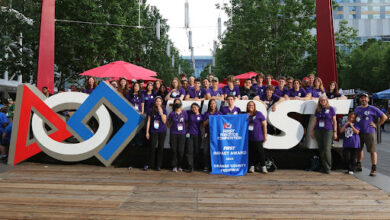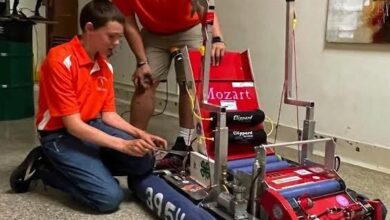The Year Humanoid Robotics Take a Giant Leap

Summary: The year 2024 marks a pivotal moment in the field of humanoid robotics as these machines are set to become more common. The rapid development in this technology, driven by artificial intelligence breakthroughs and supported by robust hardware, indicates a mass deployment of humanoid robots may soon be upon us. Despite these advancements, there’s a growing reliance on Nvidia’s technologies, raising concerns about over-dependence.
In an era where technology is advancing at unprecedented speeds, the field of humanoid robotics stands out as the next frontier. The year 2024 is shaping up to be a landmark year for general-purpose robots, with humanoid designs leading the charge. Companies like Tesla and Figure AI, along with various Chinese contenders, are making notable progress, inching closer to the achievements of pioneers like Boston Dynamics.
These companies are expected to play a central role in the widespread adoption of humanoid robots for various applications over the next couple of years. This surge is cultivated by China’s substantial production networks, which enable cost-effective production of intricate robot components. Chinese engineering talent is also a key factor, continuously pushing the boundaries of what these robots can do.
However, the advances in hardware have not entirely translated to software independence. Chinese firms heavily utilize American technologies, particularly those from Nvidia, which underpin significant advancements in machine learning and robotics simulation. Chinese startups have been vocal about their reliance on Nvidia’s Isaac platforms for robotic development, which feeds into an ongoing concern about the risks of over-reliance on a single tech giant for essential software developments.
The threat of restricted access to Nvidia’s key technologies looms over China’s robotic ambitions, especially in light of U.S. trade restrictions. As we witness the rise of humanoid robotics and marvel at the technological feats, it’s essential to consider the fragility of this dependency and what it means for the future of robotics in a global context.
Humanoid Robotics: A Rising Industry Poised for Expansion in 2024
Humanoid robotics is an industry on the cusp of a major breakthrough. With the advances being made in artificial intelligence and the improvements in hardware capabilities, humanoid robots are expected to become more prevalent in everyday life. This surge in humanoid robotics is especially significant given that these machines are designed to mimic human form and behavior, which could revolutionize various sectors, from healthcare and education to service industries.
Market Forecasts and Economic Implications
Market analysis predicts a significant increase in the deployment of humanoid robots over the next few years. Industry experts believe that by 2024, there will be a substantial rise in the presence of these robots, fueled by both technological advancements and increased consumer interest. Companies at the forefront, including big names and emerging startups, are expected to benefit from this growth.
Key contributors to market growth include the need for efficient automation solutions, the desire to streamline operations across multiple industries, and the push towards innovative customer service and care practices. The accelerating investment in research and development is another factor that is likely to drive the humanoid robotics market forward.
Challenges and Industry Dependencies
Despite the optimistic outlook, the humanoid robotics industry faces some challenges. Key among these is the dependence on specific technologies, such as those provided by Nvidia—a leader in the field of machine learning and AI technology. The dependency on a single company for crucial software and development tools raises questions about supply chain resilience and long-term sustainability. This potential bottleneck can affect not only the geopolitical balance but also the rate at which innovations can be implemented at scale.
Moreover, ethical and legal questions surrounding humanoid robots are expected to come to the fore as they become more integrated into society. Privacy concerns, human labor displacement, and safety standards are just a few of the issues that need to be addressed to ensure responsible deployment and acceptance of these robots.
Looking Ahead: The Landscape of Humanoid Robotics
In conclusion, while the industry stands primed for massive growth and integration into everyday life, companies and regulators alike must navigate the complex web of dependencies, market dynamics, and ethical considerations. The future looks bright for humanoid robotics, but it will require a collaborative effort to tackle the challenges that lie ahead.
For more information on the developments in artificial intelligence and robotics, interested readers can visit the websites of leading industry players and institutions. Find resources at the official websites such as Tesla and Nvidia. These platforms can provide valuable insights into the current state of technology and where the industry is headed.

Jerzy Lewandowski, a visionary in the realm of virtual reality and augmented reality technologies, has made significant contributions to the field with his pioneering research and innovative designs. His work primarily focuses on enhancing user experience and interaction within virtual environments, pushing the boundaries of immersive technology. Lewandowski’s groundbreaking projects have gained recognition for their ability to merge the digital and physical worlds, offering new possibilities in gaming, education, and professional training. His expertise and forward-thinking approach mark him as a key influencer in shaping the future of virtual and augmented reality applications.



